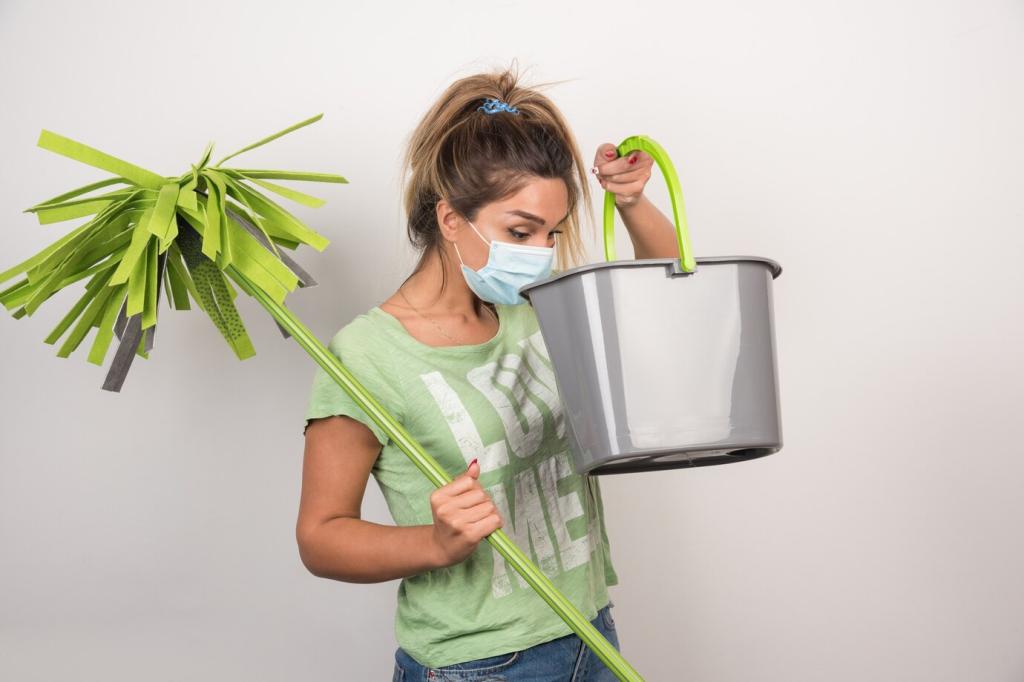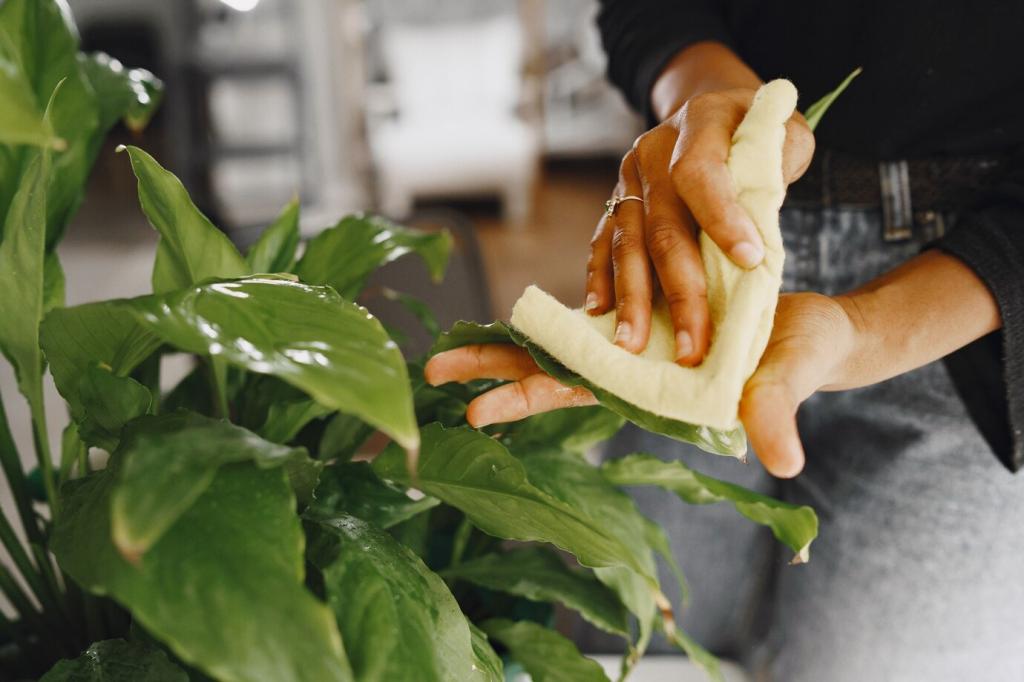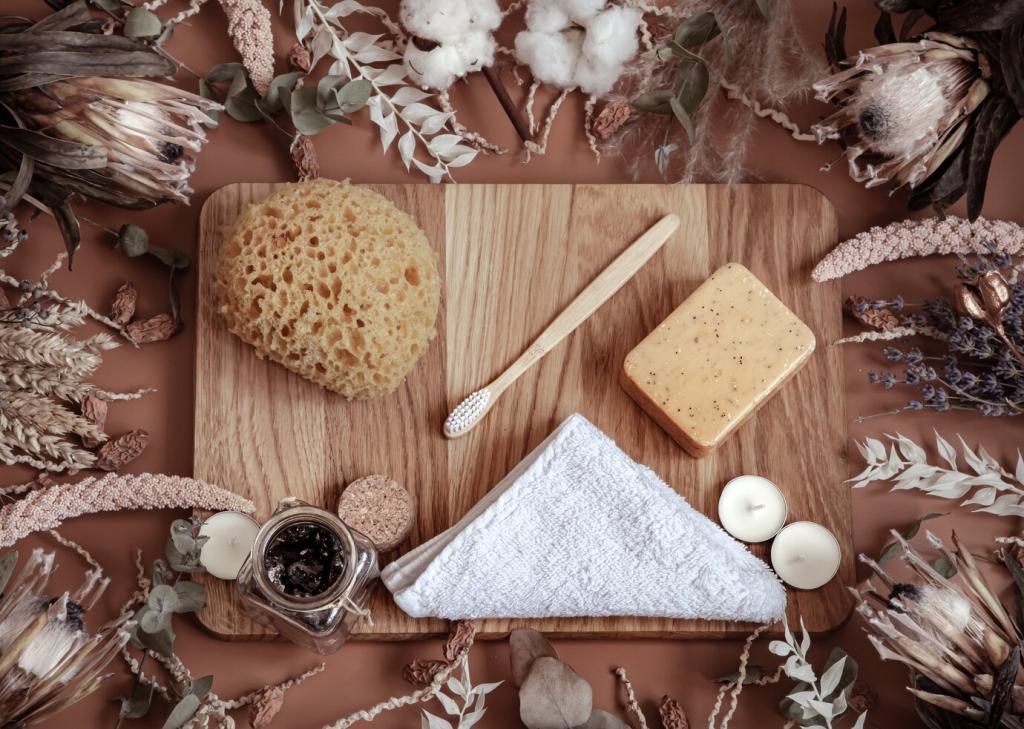Washday Rituals for Lasting Protection
Soap nuts and plant-based detergents lift soils with fewer additives, reducing residue that can stiffen fabric. Use cooler water for colors, warmer for sturdy whites, and avoid overloading—friction and crowding degrade fibers faster than thoughtfully moderated cycles.
Washday Rituals for Lasting Protection
A tablespoon of baking soda can enhance cleaning without harshness. Follow with a diluted vinegar rinse to reduce alkaline residues and soften feel. This balance supports elasticity and color depth while minimizing the need for synthetic fabric conditioners.
Washday Rituals for Lasting Protection
Lay knits flat on breathable racks, hang wovens in indirect light, and avoid high heat. Controlled airflow prevents stretching and preserves finishes from natural sprays or waxes. Bonus: indoor plants nearby gently refresh the air as everything dries.





